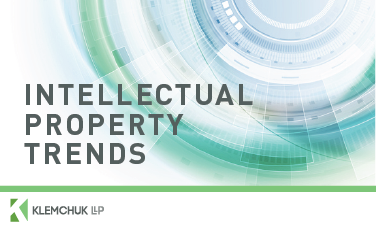Originally published by Kirby B. Drake.

Amendments to EDTX Local Patent Rules on Invalidity Contentions
The Eastern District of Texas has amended its Local Patent Rules, effective December 1, 2020.
General Order 20-17 (http://www.txed.uscourts.gov/sites/default/files/goFiles/EDTX%20GO%2020-17%20Amending%20Local%20Rules%20Final%20%28002%29.pdf).
The Preamble of Local Patent Rule 3-3 and Local Patent Rule 3-3(a) now read as follows:
Not later than 35 days after the Initial Case Management Conference with the Court, each party opposing a claim of patent infringement, shall serve on all parties its “Invalidity Contentions” which must contain the following information:
(a) The identity of each item of prior art that allegedly anticipates each asserted claim or renders it obvious. Each prior art patent shall be identified by its number, country of origin, and date of issue. Each prior art publication must be identified by its title, date of publication, and where feasible, author and publisher. Prior art sales or public disclosures under pre-AIA 35 U.S.C. § 102(b) / post-AIA 35 U.S.C. § 102(a)(1) shall be identified by specifying the item offered for sale or publicly used or the information known, the date the offer or use took place or the information became known, and the identity of the person or entity which made the use or which made and received the offer, or the person or entity which made the information known or to whom it was made known. Prior art under pre-AIA 35 U.S.C. § 102(f) shall be identified by providing the name of the person(s) from whom and the circumstances under which the invention or any part of it was derived. Prior art under pre-AIA 35 U.S.C. § 102(g) shall be identified by providing the identities of the person(s) or entities involved in and the circumstances surrounding the making of the invention before the patent applicant(s). Prior art references under post-AIA 35 U.S.C. § 102(a)(1) showing that the claimed invention was otherwise available to the public shall be identified by specifying the form and nature of the reference, the manner in which the reference was made public, and the date on which the reference was made public;
The preamble of Patent Rule 3-3 is amended to ensure a defendant an opportunity to prepare invalidity contentions at a point, at minimum, after the Rule 16 conference while maintaining the historical 45-day timeframe for doing so. Generally, infringement contentions are served shortly before the Rule 16 conference, but some plaintiffs have been serving infringement contentions concurrently with their complaint in an attempt to accelerate the invalidity contention deadline. This would give a defendant much less than 45 days to prepare invalidity contentions. Accordingly, by amending this Rule, a defendant has the opportunity to perform its invalidity contention preparations during a period after the Rule 16 conference, more in line with the spirit of the Patent Rules and historical practice in the Eastern District of Texas. This also allows both parties an opportunity to raise any case specific scheduling issues as part of the Rule 16 conference process.
Patent Rule 3-3(a) is updated to reflect changes resulting from the America Invents Act (“AIA”) and makes it clear how the provisions of 35 U.S.C. 102 before and after the AIA correspond to one another, if at all. The sections of the Patent Act are included for pre- and post-AIA because patents may be raised in patent infringement actions that may have issued prior to or after the AIA. Here is a summary of the changes to Patent Rule 3-3(a):
-
Prior to the AIA, 35 U.S.C. 102(b) discussed prior art sales as anticipatory prior art. After the AIA, this Section of the Patent Act discusses exceptions to prior art and is not limited to prior art sales. Accordingly, Patent Rule 3-3(a) adds the phrase “sales or public uses” because 35 U.S.C. 102(a)(1) is not limited to sales and includes all prior art post-AIA.
-
35 U.S.C. 102(f) was substantively eliminated as a form of prior art in the AIA. Accordingly, it is still included in Patent Rule 3-3(a) for pre-AIA but there is no post-AIA analog.
-
35 U.S.C. 102(g) relates to the “first to invent” system and allegations that a competing inventor was the first to invent the patented subject matter. With the AIA, the United States Patent and Trademark Office (“USPTO”) moved from “first to invent” to “first to file.” Thus, there is no analog to this Section post-AIA.
-
Finally, the AIA added a new category of prior art to 35 U.S.C. 102(a)(1)—any information that was “otherwise available to the public.” The USPTO refers to this as a “catch-all” to include any public information, rather than a specific class of information. Thus, Patent Rule 3-3(a) now includes broad language for the required disclosure under this Section.
For information on obtaining local counsel in Texas:
https://www.klemchuk.com/local-counsel-texas
For information on local counsel requirements in the Eastern District of Texas, EDTX:
https://www.klemchuk.com/local-counsel-requirements-eastern-district-texas
For more information on patent litigation, see our Texas Local Counsel Services for the Eastern District of Texas and Industry Focused Legal Solutions pages.

patents
You may also be interested in:
Curated by Texas Bar Today. Follow us on Twitter @texasbartoday.
from Texas Bar Today https://ift.tt/3bAau5I
via Abogado Aly Website
No comments:
Post a Comment